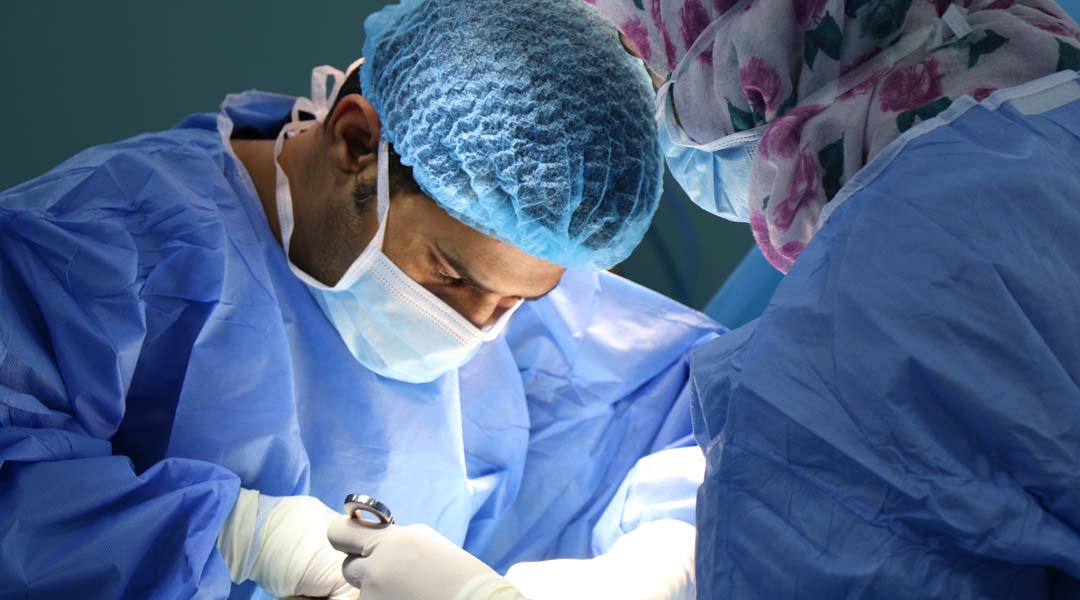Researchers have devised a surgical sealant with inbuilt sensors that detects leaks following stomach or bowel surgery. These leaks, a predominant cause of fatality after bariatric surgery, are often diagnosed after damage is already done. With this novel sealant, leaks could be more rapidly diagnosed using common imaging techniques, such as ultrasound and CT scan.
During gastric surgery, a surgical connection between two otherwise discrete parts of the stomach or intestines is made. But when the surgical connection fails, a leak can arise. This can lead to the spillage of bowel contents within the body.
“Currently, it is extremely challenging for healthcare professionals to identify these types of leaks early. They are mostly diagnosed based on clinical symptoms occurring as a result of a fully developed leak,” said Inge Hermann, a researcher at ETH Zurich, in Switzerland whose team has worked to develop a new leak sensor. “This means that, at that time, the patient is already at high risk of developing life-threatening sepsis.” With gastric juices entering the body cavity, any fixes become riskier and more difficult.
“Our technology offers a potential route to early detection as it can alert doctors before leaks become clinically symptomatic,” says Hermann.
To begin with, Hermann and colleagues designed a sensor that would be responsive to leaking gastric fluids. They honed in on two carbonate salts, barium and lanthanum carbonates, that decompose in the presence of acidic stomach juices to release carbon dioxide gas. These gases are trapped within a layered hydrogel that can be used to seal a surgical site. The dissolved carbon dioxide gas alters the speed of sound within the sealant, which in turn makes the leak visible as a brighter spot during an ultrasound. Simultaneously, the positive ions diffusing out of the sensor lead to lower contrast and a darker spot in a CT scan.
After identifying the best sensor materials, the researchers subjected them to various leak and non-leak scenarios in the context of different physiological conditions to test their sensitivity, specificity and safety.
Once these basics had been established, the researchers tested the sensor sealant in multiple settings. In one test, the team placed the surgical sealant and sensor on the outermost layer of a porcine stomach as a surgical patch. When exposed to gastric fluid, the sensors responded, and a leak was recorded using both ultrasound and CT.
In order to make detection easier, the researchers also tested different configurations—circular or linear—of the sensors. For instance, when placed as two concentric circles, the salts would appear as a solid circle in the absence of a leak. But in the presence of gastric acid, the outer circle would break down into carbon dioxide, leaving behind a detectable ring during imaging.
Ultimately, the team tested the surgical sealant in an animal model. The sealant was applied to both wound and normal sites on stomach tissue. At multiple timepoints post-surgery, the researchers captured CT images. When placed on a leaking connection the shape of the sensor changed three hours after surgery, and a more distinct difference after six hours with both ultrasound and CT images was observed. On the other hand, the sealant patch placed on normal tissue remained unchanged.
“We believe that this technology could render gastrointestinal surgery considerably safer by offering new routes to early detection of anastomotic insufficiencies,” said Hermann. Combining sensors with the sealant allows for more rapid leak detection and treatment, greatly reducing risk for patients. Moreover, the sensors are easily detectable even with ultralow radiation dose CT, enabling frequent scanning.
In the future, the researchers intend to test their device in experimental settings that more closely mimic patient experiences.
Reference: Benjamin Suter, et al., Surgical Sealant with Integrated Shape-Morphing Dual Modality Ultrasound and Computed Tomography Sensors for Gastric Leak Detection, Advanced Science (2023). DOI: https://doi.org/10.1002/advs.202301207

















